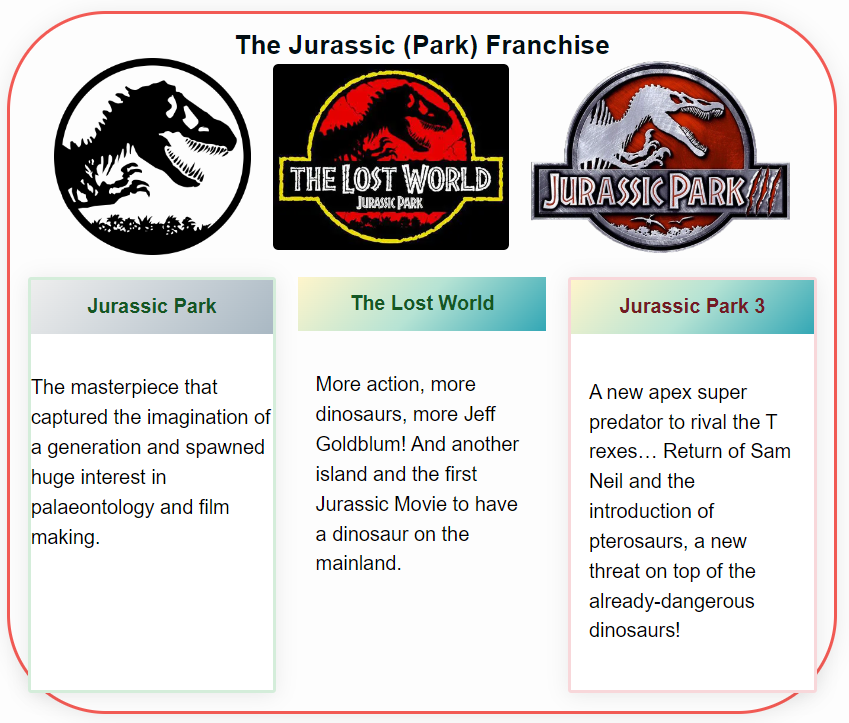If you’re looking for a unique and fascinating attraction in London, look no further than the Crystal Palace Dinosaurs. These life-sized sculptures of prehistoric creatures are unlike anything else you’ll find in the city, and they have a rich history that’s worth exploring.
The Crystal Palace Dinosaurs were created in the 1850s by sculptor Benjamin Waterhouse Hawkins, and they were the first attempt to create accurate, life-sized models of prehistoric animals. The sculptures were based on the latest scientific knowledge of the time, and they were intended to educate and entertain visitors to the Crystal Palace, a grand exhibition hall that was one of the most popular attractions in London at the time.
Today, the Crystal Palace Dinosaurs are a unique and fascinating piece of London’s history. They’re located in a tranquil park in South London, and they offer a glimpse into the past and the way that people thought about prehistoric creatures in the mid-19th century.
Whether you’re a history buff, a science enthusiast, or just looking for something different to do in London, the Crystal Palace Dinosaurs are well worth a visit.
History of Crystal Palace Dinosaurs
Creation
The Crystal Palace Dinosaurs, also known as the Dinosaur Court, are a collection of life-sized sculptures of extinct animals located in Crystal Palace Park, London. They were created in the mid-1850s by the sculptor Benjamin Waterhouse Hawkins, and were the first ever dinosaur sculptures in the world.
Hawkins created the sculptures under the guidance of the paleontologist Sir Richard Owen, who wanted to educate the public about the prehistoric world. The sculptures were based on the latest scientific knowledge at the time, and were designed to be as accurate as possible.
The sculptures were made from brick and iron framework, with a layer of cement and a final layer of concrete. They were then painted to look like real animals, with realistic skin texture and color.
Restoration Efforts
Over the years, the Crystal Palace Dinosaurs fell into disrepair. Many of the sculptures were damaged by weather, vandalism, and neglect. In the 1950s, some of the sculptures were even painted with graffiti.
In 2002, a restoration project was launched to restore the Crystal Palace Dinosaurs to their former glory. The project was led by the Friends of Crystal Palace Dinosaurs, a group of volunteers who were passionate about preserving the sculptures.
The restoration project involved cleaning and repairing the sculptures, and adding new information panels to provide visitors with more information about the animals. The project also involved creating a new visitor center, which opened in 2016.
Today, the Crystal Palace Dinosaurs are a popular attraction for visitors to Crystal Palace Park. They are a unique and fascinating reminder of the prehistoric world, and a testament to the creativity and ingenuity of Benjamin Waterhouse Hawkins and Sir Richard Owen.
Design and Construction
Sculptors
The Crystal Palace Dinosaurs were designed and constructed by a team of sculptors led by Benjamin Waterhouse Hawkins. Hawkins was a skilled artist and naturalist who was commissioned by the Crystal Palace Company to create a series of life-sized models of prehistoric creatures for the opening of the Crystal Palace Park in 1854.
Hawkins was assisted by a team of artists and sculptors, including Richard Owen, who was a renowned paleontologist and the founder of the Natural History Museum in London. Together, they worked tirelessly to create accurate and detailed models of the dinosaurs and other prehistoric animals.
Materials Used
The sculptures were constructed using a variety of materials, including brick, iron, and concrete. The framework of each model was made from iron, which was then covered with brick and concrete to create the shape of the animal. The skin and other details were then added using a mixture of cement and sand.
The sculptures were painted in naturalistic colors to make them appear as lifelike as possible. The paint was carefully applied to highlight the details of the animal’s skin, such as scales, feathers, and fur.
Overall, the design and construction of the Crystal Palace Dinosaurs was a remarkable achievement that showcased the artistic and scientific skills of the sculptors involved. Today, the sculptures continue to be a popular attraction and a testament to the ingenuity and creativity of those who created them.
Scientific Accuracy
When it comes to the Crystal Palace Dinosaurs, scientific accuracy is of utmost importance. As the first dinosaur sculptures in the world, they were created at a time when little was known about these prehistoric creatures. However, the artists and scientists involved in their creation did their best to ensure that the sculptures were as accurate as possible given the knowledge available at the time.
One of the most impressive aspects of the Crystal Palace Dinosaurs is their size. The sculptures are life-size, which means that they give visitors a sense of just how large these creatures were. Additionally, the artists took great care to ensure that the proportions of the dinosaurs were accurate. For example, the Iguanodon sculpture has the correct number of fingers on its hands, which was a detail that was not known at the time of its creation.
Another important aspect of the scientific accuracy of the Crystal Palace Dinosaurs is the way that they are posed. The sculptures are not simply standing still, but are instead depicted in various positions that are based on scientific knowledge of how these creatures would have moved. For example, the Megalosaurus sculpture is shown with one foot raised, which is a pose that is consistent with what scientists now know about the way that these dinosaurs walked.
Overall, the Crystal Palace Dinosaurs are an impressive example of how art and science can come together to create something truly special. While some details may not be completely accurate by today’s standards, the sculptures are still an important part of the history of paleontology and continue to inspire visitors of all ages.
Cultural Impact
Influence on Pop Culture
The Crystal Palace Dinosaurs have had a significant impact on pop culture since their creation. They have been featured in various movies, TV shows, and books, including the popular TV show Doctor Who. The dinosaurs are also often referenced in popular culture and have become an iconic symbol of Victorian-era England.
Educational Significance
In addition to their impact on pop culture, the Crystal Palace Dinosaurs have also had a significant educational significance. The sculptures were the first attempt to create life-size, scientifically accurate models of prehistoric animals. They were created to educate the public about the latest scientific discoveries of the time.
Today, the sculptures continue to be used as an educational tool. They are a popular destination for school trips and educational tours. The sculptures are also used to teach children about the history of science and the importance of accurate scientific representation.
Overall, the Crystal Palace Dinosaurs have left a lasting impact on both pop culture and education. Their legacy continues to inspire and educate people of all ages.
Current Status
Preservation
The Crystal Palace Dinosaurs are currently in a state of preservation. The sculptures have undergone restoration work in recent years to ensure their longevity. In 2020, a restoration project was completed on the Megalosaurus, one of the most iconic sculptures in the park. This involved cleaning, repairing, and repainting the sculpture to restore it to its former glory.
The Friends of Crystal Palace Dinosaurs, a group dedicated to preserving and promoting the sculptures, continues to monitor the condition of the sculptures and work with experts to ensure their preservation. They also raise awareness about the importance of the sculptures and their historical significance.
Public Access
The Crystal Palace Dinosaurs are open to the public and can be visited at any time during park hours. Visitors can explore the park and see the sculptures up close, while also learning about the history and science behind them.
There are also guided tours available, led by knowledgeable experts who can provide insights into the sculptures and their significance. These tours are a great way to learn more about the park and its unique history.
Overall, the Crystal Palace Dinosaurs are an important part of London’s cultural heritage and continue to be a popular attraction for visitors of all ages. With ongoing preservation efforts and public access, these sculptures are sure to be enjoyed by generations to come.
Future Plans
Crystal Palace Dinosaurs are a unique and valuable asset to the community, and there are many plans in place to ensure their continued preservation and accessibility.
The Friends of Crystal Palace Dinosaurs, a volunteer group dedicated to maintaining and promoting the site, have several goals for the future. They aim to improve the visitor experience by creating a new entrance and visitor center, as well as enhancing the signage and interpretation of the sculptures. They also plan to improve accessibility by creating new pathways and installing ramps for wheelchair users.
In addition to these improvements, the Friends of Crystal Palace Dinosaurs are also working on a long-term conservation plan for the sculptures themselves. This involves regular cleaning, repair, and monitoring of the sculptures to ensure they remain in good condition for future generations to enjoy.
The site is also part of a wider conservation initiative, with the London Borough of Bromley and Natural England working together to protect the surrounding parkland and wildlife. This includes managing the grassland, woodlands, and ponds, as well as monitoring the wildlife and introducing new habitats where necessary.
Overall, the future of Crystal Palace Dinosaurs looks bright, with many plans in place to ensure their continued preservation and accessibility for years to come.
Frequently Asked Questions
What is the history behind the Crystal Palace Dinosaurs?
The Crystal Palace Dinosaurs were created in the mid-19th century by sculptor Benjamin Waterhouse Hawkins. He was commissioned by Sir Richard Owen, who was a leading paleontologist at the time, to create life-sized models of extinct animals for the newly opened Crystal Palace Park in London. The models were meant to educate the public about the prehistoric world and showcase the latest scientific knowledge about dinosaurs.
How many different types of dinosaurs are at Crystal Palace Park?
There are a total of 30 dinosaur models at Crystal Palace Park, including some that are not technically dinosaurs but are part of the prehistoric ecosystem. The models range in size from small reptiles to large sauropods and include well-known species such as Tyrannosaurus rex, Stegosaurus, and Triceratops.
Who created the Crystal Palace Dinosaurs and why?
The Crystal Palace Dinosaurs were created by Benjamin Waterhouse Hawkins, a sculptor who was known for his work on natural history models. He was commissioned by Sir Richard Owen, who was a leading paleontologist at the time, to create the models for the newly opened Crystal Palace Park in London. The models were meant to educate the public about the prehistoric world and showcase the latest scientific knowledge about dinosaurs.
Are the Crystal Palace Dinosaurs scientifically accurate?
The Crystal Palace Dinosaurs were created in the mid-19th century, and the scientific understanding of dinosaurs has evolved significantly since then. While some of the models are still considered accurate, others are now known to be inaccurate or outdated. However, the models are still valuable as historical artifacts that showcase the scientific knowledge and artistic styles of the time.
Has there been any recent restoration work done on the Crystal Palace Dinosaurs?
Yes, there has been recent restoration work done on the Crystal Palace Dinosaurs. In 2016, a major restoration project was undertaken to repair and conserve the models, which had suffered from years of exposure to the elements. The project involved cleaning the models, repairing damage, and adding new paint and other materials to bring the models back to their original appearance.
Are there any plans to expand the Crystal Palace Dinosaur exhibit in the future?
There are currently no plans to expand the Crystal Palace Dinosaur exhibit in the future. However, the models remain a popular attraction at Crystal Palace Park and are an important part of London’s cultural heritage.


